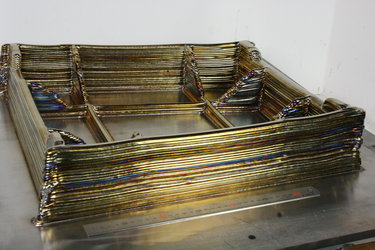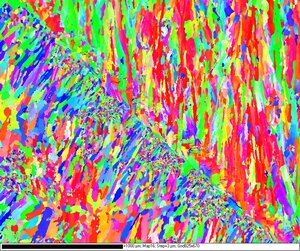

Design and production process
The design and production process involved in creating metal 3D-printed radio-frequency waveguides, used to screen frequencies in space communications. It begins with modelling the internal surface model needed to allow desired frequencies through, following by optimisation of this shape relative to the metal 3D-printing process. Then the entire solid part to be printed – encompassing its internal and external shape – is finalised, including any ‘blank’ support material to keep it oriented correctly during printing.
Once the print plan is finalised the print itself takes place, using selective laser melting of metal powder. This is followed by removal of any remaining metal powder and heat treatment to relieve stresses caused by the printing process, then the milling of necessary interfaces such as holes and threads. The next step is careful measurement of the resulting part to ascertain its suitability in terms of precise geometry and print quality. Follow-on stages may then include silver plating or other surface treatments.





